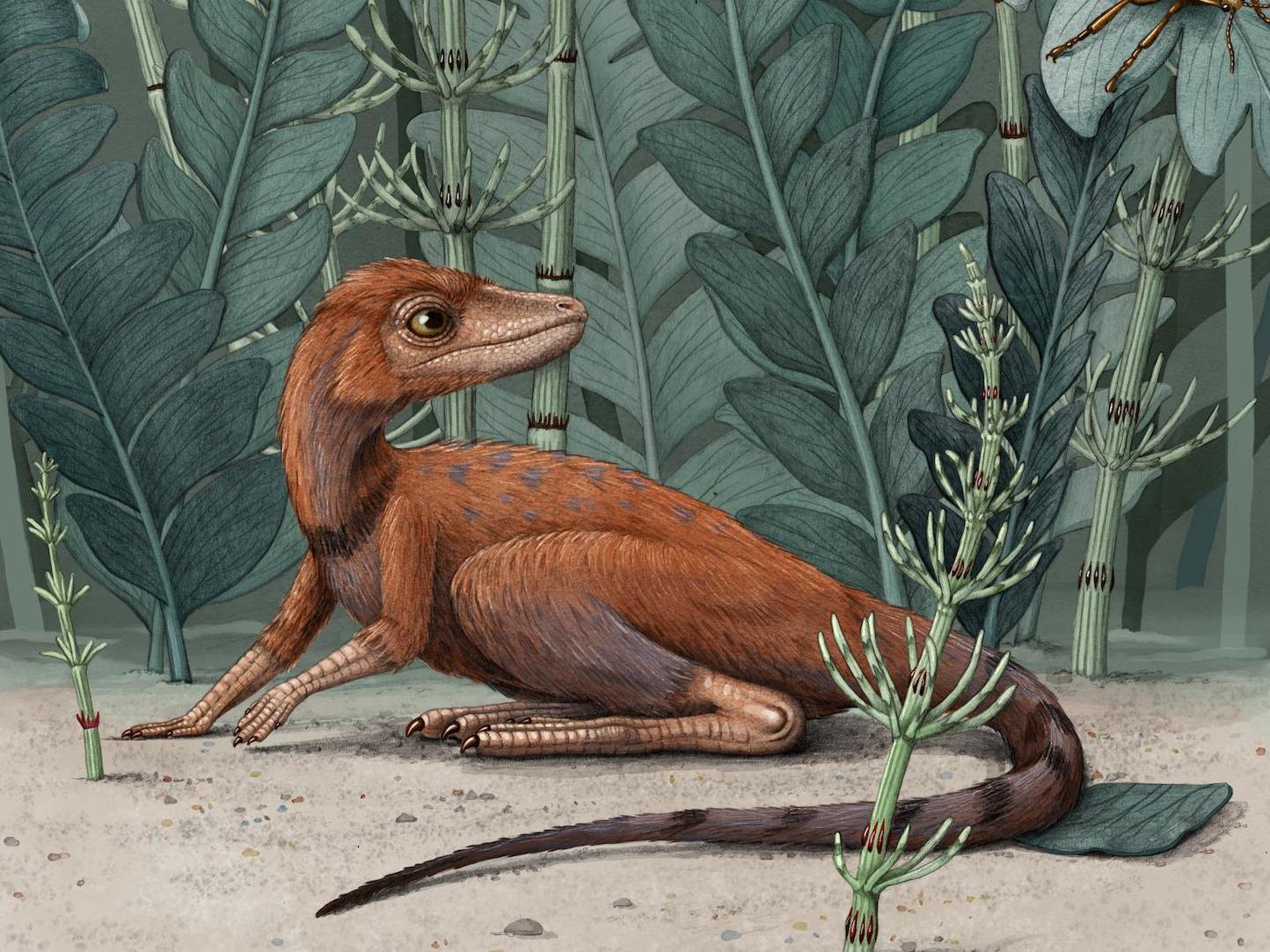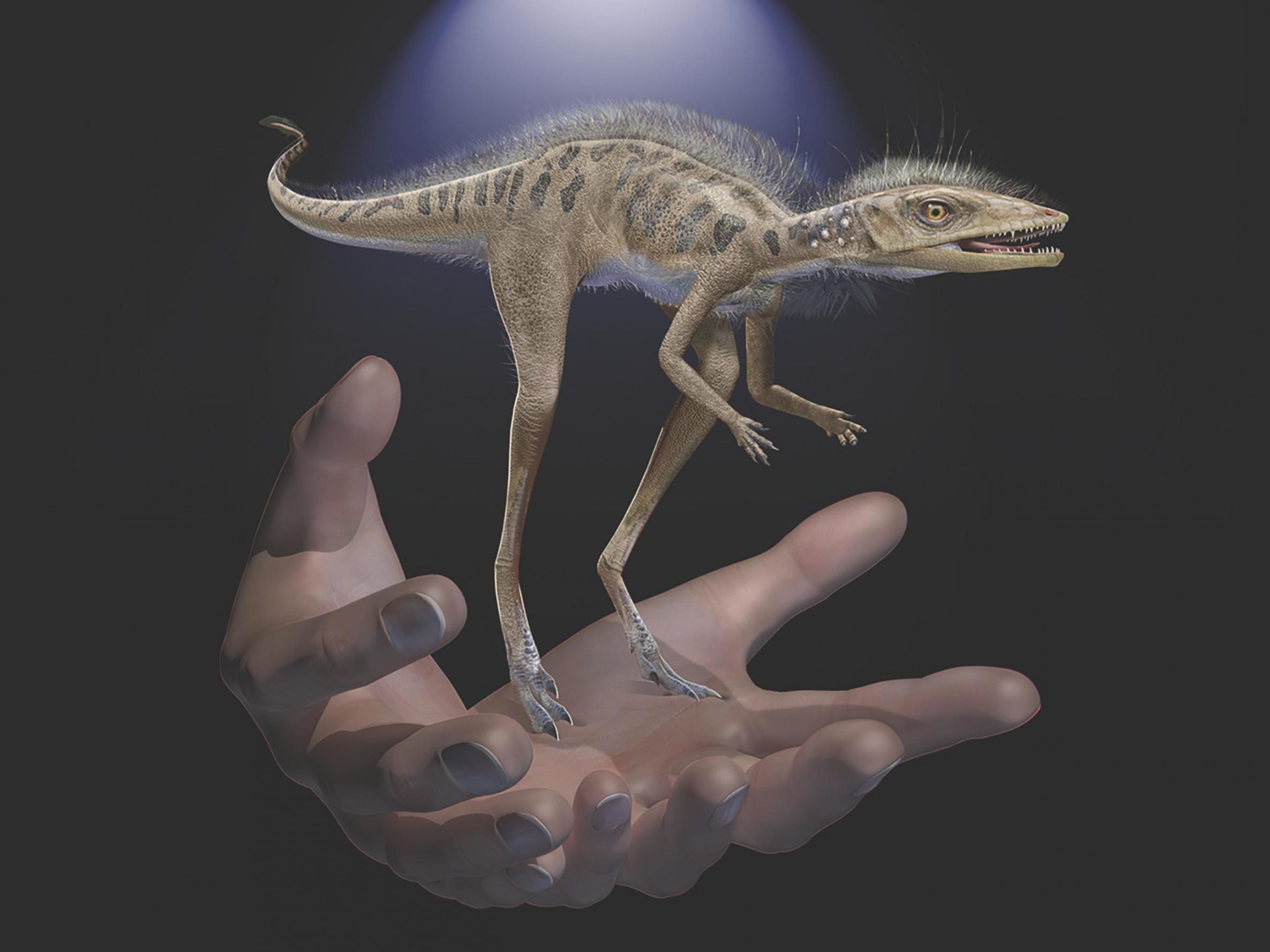Dinosaurs descended from pocket-sized reptile which ‘would probably make a great pet’, scientists say
‘Tiny insect slayer’ just 10cm tall lived 237 million years ago in Madagascar, fossil study reveals

Your support helps us to tell the story
From reproductive rights to climate change to Big Tech, The Independent is on the ground when the story is developing. Whether it's investigating the financials of Elon Musk's pro-Trump PAC or producing our latest documentary, 'The A Word', which shines a light on the American women fighting for reproductive rights, we know how important it is to parse out the facts from the messaging.
At such a critical moment in US history, we need reporters on the ground. Your donation allows us to keep sending journalists to speak to both sides of the story.
The Independent is trusted by Americans across the entire political spectrum. And unlike many other quality news outlets, we choose not to lock Americans out of our reporting and analysis with paywalls. We believe quality journalism should be available to everyone, paid for by those who can afford it.
Your support makes all the difference.A pocket-sized, insect-eating reptile that lived 237 million years ago was an ancestor of giant dinosaurs that went on to dominate the world, newly studied fossils suggest.
Kongonaphon kely, whose scientific name means “tiny bug slayer,” stood at just 10cm (4ins) tall and 40cm (16ins) long. It inhabited a floodplain region of what is now southwestern Madagascar during the Triassic period, according to scientists who unveiled the species this week.
A long-legged and possibly bipedal predator, the Kongonaphon was a member of a group called Ornithodira, which evolved into dinosaurs and their flying cousins pterosaurs. The origins of the later, larger reptiles are poorly known as few specimens from near the root of this lineage have been found.
But American and Madagascan researchers who described the new species in a study on Monday said their analysis suggested dinosaurs and pterosaurs “evolved from a miniaturised ancestor” that lived relatively recently before them.
“There’s a general perception of dinosaurs as being giants,” said Christian Kammerer, a research curator in palaeontology at the North Carolina Museum of Natural Sciences. “But this new animal is very close to the divergence of dinosaurs and pterosaurs, and it’s shockingly small.”
Dinosaurs and pterosaurs first appeared roughly 230 million years ago. The early dinosaur Herrerasaurus was about 6m (20ft) long, while the early pterosaur Eudimorphodon was pigeon-sized.
Both groups eventually achieved gigantic proportions. The pterosaur Quetzalcoatlus had a wingspan of about 10.5m (35ft), akin to an F-16 fighter. The dinosaur Argentinosaurus reached about 35m(115ft) long.
In the context of this later gigantism, an animal like Kongonaphon “that could fit into your hands seems almost paradoxical,” said Dr Kammerer, the study’s lead author. He suggested “some of these things would have been quite cute animals” that “would probably make a great pet”.
“However, it fits the broader pattern that we observe at this time. There was a sustained trend towards smaller adult body sizes in the early history of this lineage,” he added.
“This is based not only on Kongonaphon, but on a series of small-bodied reptiles near the common ancestry of the dinosaur and pterosaur lineages.”

The fossils of Kongonaphon were discovered in 1998 in Madagascar by a team of researchers led by John Flynn, curator of fossil mammals at the American Museum of Natural History.
Dr Flynn said: “This fossil site in southwestern Madagascar from a poorly known time interval globally has produced some amazing fossils, and this tiny specimen was jumbled in among the hundreds we’ve collected from the site over the years.
“It took some time before we could focus on these bones, but once we did, it was clear we had something unique and worth a closer look.”
Researchers said the shape of Kongonaphon’s small, conical and unserrated teeth and an examination of microscopic wear on them suggest it ate insects or other small invertebrates. Analysis of a cross section of fossilised bone indicate the specimen found was likely a mature animal.
Kongonaphon is not the first small species known near the root of the ornithodiran family tree, but previously such specimens were considered “isolated exceptions to the rule,” Dr Kammerer noted. In general, the scientific belief was that body size remained similar among the first archosaurs – the larger reptile group that includes birds, crocodilians, dinosaurs, and pterosaurs – before increasing to gigantic proportions among dinosaurs.
Dr Kammerer said: “Recent discoveries like Kongonaphon have given us a much better understanding of the early evolution of ornithodirans. Analysing changes in body size throughout archosaur evolution, we found compelling evidence that it decreased sharply early in the history of the dinosaur-pterosaur lineage.”
The findings could help to answer questions about how and why dinosaurs evolved as they did. For instance, the researchers believe the fuzzy skin coverings and feathers found on both dinosaurs and pterosaurs may have originated in their miniature common ancestor, which would have required extra help to keep its small body warm in the mid-late Triassic era of climatic extremes.
Join our commenting forum
Join thought-provoking conversations, follow other Independent readers and see their replies
Comments